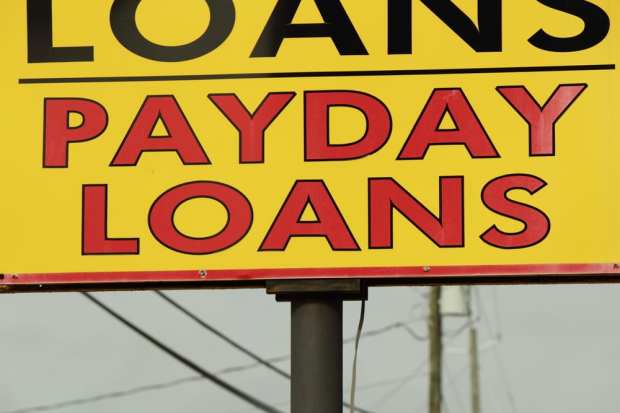How FinTech Can Disrupt A Payday Lending Industry That No One Likes Anyway

The death of U.S. payday lending has long been forecast, as opponents complain that short-term, high-interest loans offer consumers little more than an opportunity to fall into a debt trap that could take years to emerge from. Will competition from FinTechs finally spark the industry’s demise?
The U.S. government has staged on-again/off-again crackdowns against the high costs of payday lending. For instance, the U.S. Consumer Finance Protection Bureau’s 2017 final payday ending rules required short-term lenders to assess borrowers’ ability to repay before extending credit, and also put limits on how often borrowers could roll over loans.
But questions quickly arose as to whether those requirements would ever actually take effect. While proponents cheered a new nationwide standard as a way to protect vulnerable consumers, opponents called the rule a clear case of federal government overreach. They claimed the CFPB was “protecting” consumers to death by cutting them off from an easy source of loans at times when people needed money the most.
CFPB Director Richard Cordray departed shortly after the rules came out, replaced first by interim head Mick Mulvaney and then permanently by Kathy Kraninger in 2018. By last year, the CFPB signaled its intentions to make adjustments to the final rules, eliminating the requirement that lenders establish potential borrowers’ ability to repay. The potential rule changes also aimed to rescind the limits on repeat reborrowing by a single consumer.
Nothing concrete happened for more than a year, until COVID-19 struck and the CFPB snapped into action. Last month, Kraninger rescinded the ability-to-repay and repeat-borrowing rules.
“The Bureau is taking action to ensure that consumers and market participants understand that the same rules continue to govern the consumer financial marketplace,” the CFPB chief said in announcing the move.
There are estimates that the changes will save small-dollar lenders more than $7 billion annually, and have thus been very popular with the industry – but they’ve been very unpopular with opponents of payday lending.
“This isn’t just a matter of consumer protection – it’s a matter of safety and soundness,” Jeremy Kress, an assistant professor of business law at the University of Michigan, told Vox. “Lenders have no business making loans to people if the lender can’t make a reasonable and good-faith determination that the borrower has a reasonable ability to repay the debt.”
He noted that consumers make bad decisions in desperate situations, and unscrupulous lenders have historically used that to their advantage. Kress argued that the COVID-19 era is exactly the wrong time to deregulate payday lending.
Enter the Competition
But payday lenders might not want to declare themselves in the clear just yet – because even if the government isn’t coming for them, competing products increasingly are. And the trouble with being the “lender of last resort” is that borrowers are always open to a better offer.
One form might be coming from FinTechs that are poised to underwrite small-dollar, short-term loans, but to do it differently than the typical payday lenders.
Square had the most recent rollout of that segment, recently testing loans up to $200 via the Square Cash app. “We are always testing new features in Cash App, and recently began testing the ability to borrow money with about 1,000 customers,” a Cash App spokesperson said in a statement. “We look forward to hearing their feedback and learning from this experiment.”
Loans start at $20, with payment due within four weeks (plus a one-week grace period for users who miss the deadline). The loans carry a 5 percent fee and no interest for four weeks, plus the one-week grace period.
After that, Square charges 1.25 percent of non-compounding interest weekly. That adds up to a 65 percent annual percentage rate. While that’s high, it’s still far below the nearly 400 percent APR that some payday lenders charge.
And while building a better short-term loan is one way to challenge payday lenders, another school of thought argues that workers wouldn’t need to borrow at all if they didn’t have to wait two weeks to collect their pay. In fact, some financial institutions (FIs) and FinTechs argue that workers should get paid instantly each day.
As Warren Perlman, chief information officer at global human capital management company Ceridian, told Karen Webster in a recent conversation, workers often turn to payday loans to fill a cash-flow hole that doesn’t have to exist. He said that’s just a relic of a two-week pay cycle that’s out of step with modern workers’ needs, particularly during the COVID-19 pandemic.
Perlman believes that a reimagining of how and when employees are paid is long overdue. “Workers need to be able to access their funds as they are available to them, especially in a downturn,” he said.
He views payday loans as bad for those who take them – and bad for employers, because workers who are focused on climbing out of debt aren’t as focused on their jobs. Perlman said employers can play a critical role in supporting employees’ financial wellness – not to mention boosting worker loyalty and job satisfaction – by giving staffers faster access to pay.
After all, if consumers have access to cash when and how they need it, payday loans become less attractive no matter what laws govern the segment.
The bottom line: Even if the rules don’t change, the competitive landscape will likely keep expanding as more players try to disrupt an industry that no one really likes that much.
